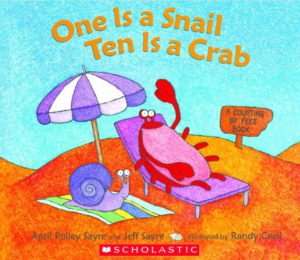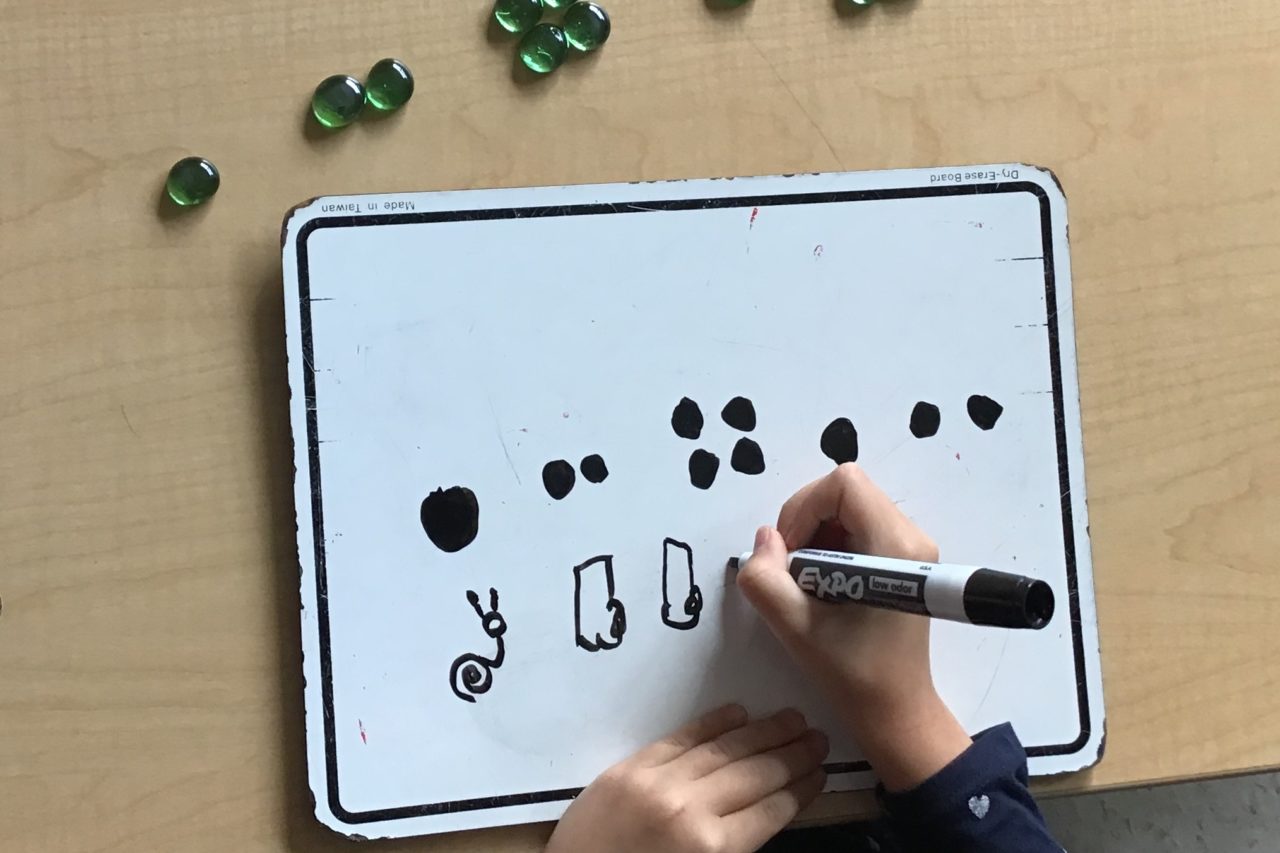A team of Early Years teachers from Southwood School and I attended a mRLC workshop facilitated by Carole Fullerton titled: Using Good Questions as a Gateway to Mathematical Understanding in Diverse Classrooms.
One aspect of the workshop had Carole Fullerton leading a group of Grade 1 and Grade 2 students through a rich problem solving experience and the context of the lesson was connected to this picture book titled One is a Snail, Ten is a Crab by April Sayre and Jeff Sayre.

Carole designed the lesson with the following 3 part structure:
- Connecting to the Math
- Doing the Math
- Debrief the Math
Part 1: Connecting to the Math
Before Carole launched into the lesson, she clearly stated what the students would be doing during their time together, she stated they would be: Looking at pictures, reading a story and solving a problem. Carole started the lesson off with showing them quick images of a few different ten frames and asked the students:
- How many red squares do you see?
- How do you know there is 6?
- How many more do you need to make 10?
These ten frames were used to get the students thinking about numbers and using the visual of ten frames to support their thinking about the different numbers.
After working with a few ten frames, she started to read the story to the students. As she was reading, she would pause and ask questions: What do you see? What do you think will come on the next page? Why do you think that? She also modelled for the students that when we are doing math, it is helpful to record our thinking with quick sketches, this was to support the work the students would be doing later in the lesson. The book is a counting by feet book where 1 is a snail, 2 is a person, 3 is a snail and a person, 4 is a dog ect. Students were quick to share different combinations they figured would make 5. She stopped reading the book once we got to the page 10, this was an instructional decision that supports the idea that we can mathematize specific sections of the book or use one page from a book to use as a context for exploration. Carole then proposed the following question to the students:
There were 10 feet on the beach. What creatures could there be?
Part 2: Doing the Math:
Students were provided with different maniplatives to explore a solution to the question. After the students solved the problem one way with the use of the manipulatives, they were provided with whiteboards where they could record their thinking and different combinations to make 10 feet using pictures, numbers and symbols. This is an open ended problem where many different solutions can be offered by the students and also provides opportunities to create extensions for students who were in need of a challenge. For example, I went back to the beach the next day and saw 17 feet, what creatures might have I seen? While the students were exploring the task, Carole walked around with sticky notes which indicated which students responses she wanted to be shared with the class during part 3 of the lesson. She was looking specifically for students who created solutions that had 2 parts, 3 parts and 4 parts in their representations.
Part 3: Debrief the Math
After the students had enough time to explore different possibilities to the question, Carole gathered them back together and invited the students she had selected to share what solutions they had discovered. She prompted the students with these questions: What do you notice? Do you agree with what you see? Why does this make sense? How are the representations the same? How are they different?
The Southwood teachers and I have had the opportunity to try this lesson with Grade 1 students and here is feedback from one of the teachers:
- The importance of being intentional with the type of manipulatives offered and being ready and willing to swap out a material that wasn’t working for a student
- I was pleasantly surprised by their excitement to find more than one solution (second time around).
- I found it beneficial to have the students create a solution with maniplatives first and then using a non permanent surface to record their thinking.
- After we reflected on how the lesson went, I was inspired to live in the story context for longer than the initial problem solving experience. Ie. I went to the farm, how which animals did I see etc.
A variety of learning experiences can be designed by using one picture book as the context. The book used in this lesson can be used for future lessons, for example, changing the number of feet that are explored, creating other open ended problems to explore that may include subtraction. This is an engaging and meaningful way to have students construct an understanding of mathematical concepts by communicating and representing their thinking using manipulatives and other representations.
For more resources from Carole Fullerton click on this link.
